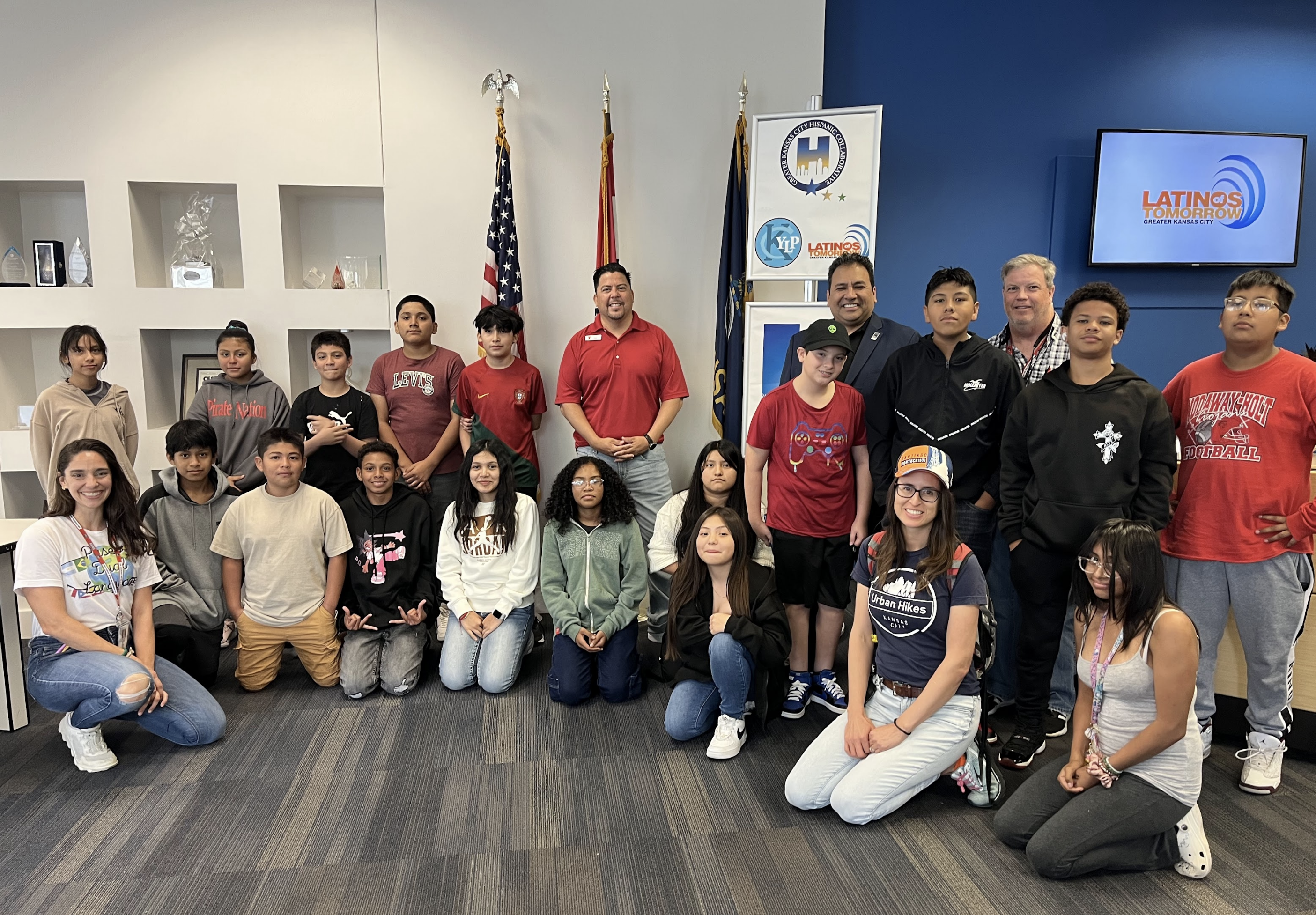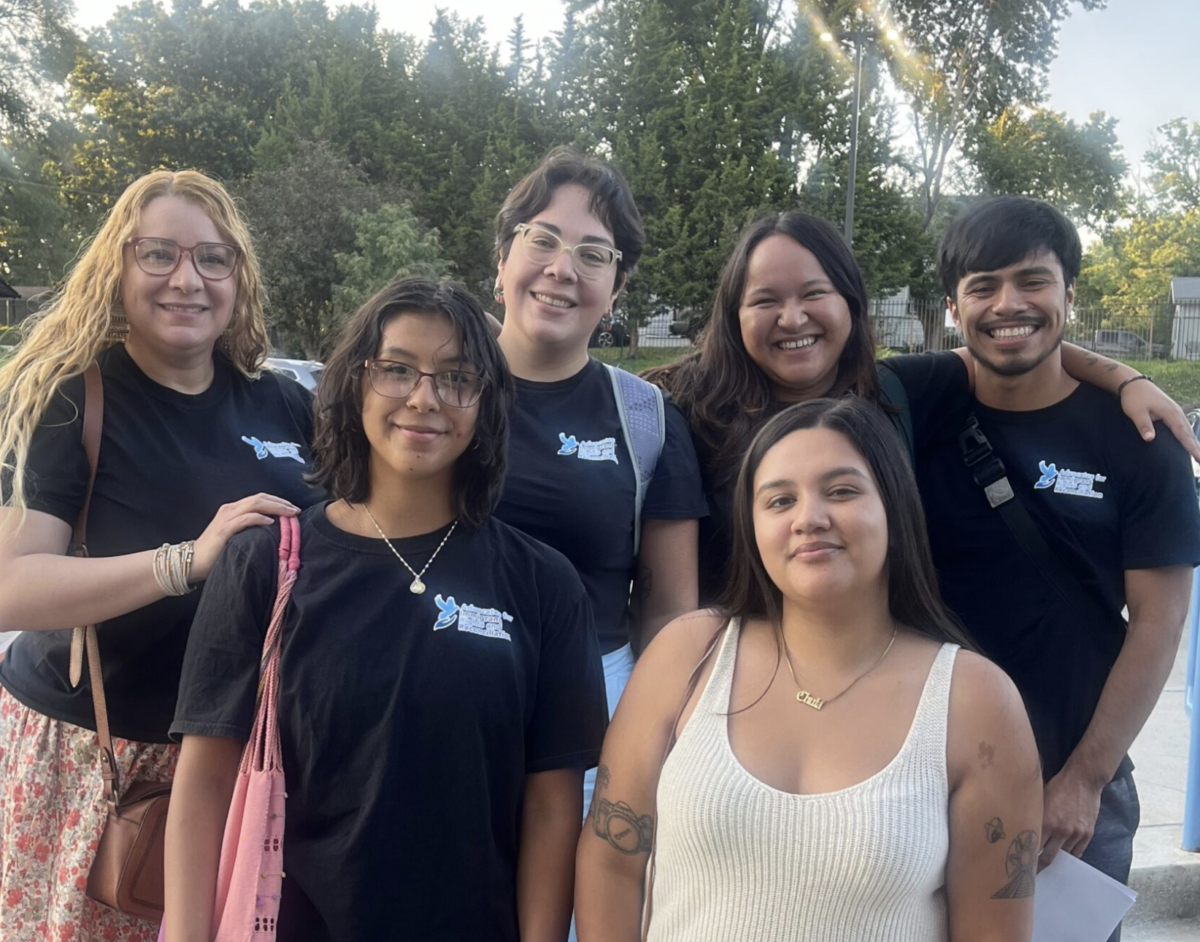
Daisy Garcia-Montoya
Education Reporter
At Paseo Academy of Fine and Performing Arts, students have the unique opportunity to continue to practice, take courses in Spanish, and earn college credit through the dual language program.
As students from George Washington Carver Dual Language School, a 2-6th grade Kansas City Public School (KCPS) that provides students instruction in two languages, Spanish and English, began to transfer and continue their education at Paseo, the school decided to continue to offer dual language instruction to those students.
Currently, the program at Paseo begins in 7th grade and extends to 10th grade, consisting of 105 students in the cohort with plans to include 11th and eventually 12th grade as current students progress grades. The model follows a 40% of Spanish and English instruction with classes such as Spanish, literature, and social studies completed in Spanish while the rest of the classes are completed in English.
Once students in the cohort reach 9th grade, they are able to enroll in dual credit classes with the University of Missouri – Kansas City and receive college course credit for their Spanish literature classes each year.
“It’s an excellent opportunity that we were able to start last year,” said Vice-Principal Kent Mailen, who works directly with the dual language program. “Students will be able to have up to 12 hours of dual credit in Spanish by the time they graduate.”
In addition, the school is looking to potentially add AP Spanish literature for 11th and 12th graders, which could provide additional college course credit to students who earn the necessary scores and can be nearly equivalent to a minor in Spanish by the time they graduate. Apart from the college credit that students can earn, KCPS offers students the opportunity to test and receive a Seal of Biliteracy certificate before they graduate.

Although most students in the program came from a prior school that offered dual language instruction, there have been a few students that had not gone to a dual language school but that had a high level of knowledge for writing and reading in Spanish and were able to test into the program.
“I think one important distinction is that this is not an ELL program. The purpose of this program is for there to be English literacy and Spanish literacy being built simultaneously, “ said Elizabeth Smith, a math teacher and coordinator with the program. “Additionally, we see that our dual language students are outperforming their monolingual peers in not just English and Spanish, but in every subject area including math, science and history.”
Smith says that one of the benefits of the cohort is developing a tight-knit group of students, some who have been together since kindergarten and teachers providing a close eye on their progress.
At the same time, some students begin to question their involvement in the program, particularly around 8th grade, due to feeling separated from those students who are not in the program, leading to a few students dropping the program.
Spanish language and literature teacher Kevin Donnelly says that to him, it is important to let students know the real-life benefits of being bilingual so that they can understand why this program is so important and how it can impact their future if they fully take advantage of it.
“It’s a very beneficial program, in the future you will be able to have college credit and it will be a financial benefit. They’ll be able to say they can understand, they have the ability to express themselves and read and it will have a positive impact because they’ll be ready for the real world and they’ll get more job opportunities,” Donnelly said. “Learning a language is not only learning the language, but also culture, traditions and customs.”
The program’s cohort is made up of students from various racial backgrounds as well as a mixture of students who came from a Spanish-speaking household, have had non-continuous Spanish learning and students who do not come from a Spanish-speaking household but have always been part of a dual language program. The participants’ diverse backgrounds have allowed the program to serve as a way to build bridges between cultures and create a sense of belonging for all students.
Spanish language and literature teacher Olivia Flores says the program aims to provide students with the tools to communicate in different languages and cultures and to celebrate the linguistic and cultural diversity in the building, specifically by uplifting the multiple Latine cultures and variations of the Spanish language.
“This program is a way to access culture in a way that’s uplifting and honors that culture, especially in a society that has not always honored the languages of people who speak or come from a Latin American country,” Flores said. “It’s a huge impact especially in Kansas City. We want to acknowledge a past that has not always been kind to multilinguals and use a public school system to really reclaim the linguistic and cultural richness that we have in the district and elevate it. We just completely offer students the opportunity to excel in both languages and have a comprehensive multicultural understanding of their school environment, communities, global cultures and get to understand their identity within such a dynamic environment.”

To provide students with more opportunities to engage in the language and culture, events such as the Latinx World Cup, a five by five tournament structure where each team is a Latin American country, and field trips have been created to further expose students on ways they can use what they are learning in the classrooms.
Senior Rene Aguilar says that one of his favorite aspects of this program is the diversity among the students involved and the opportunities it provides. “I don’t want my peers to just see these classes as something that they have to take to graduate. I want them to see this as an opportunity to expand their Spanish knowledge but also their cultural growth,” Aguilar said. “Dual language programs aren’t just about dual language but also about learning about people in general. I’m very glad that at our school we have a program like this and that I’ll be able to come back and say that I was a representative of this program.”
Although the school has served as part of the pipeline for students at George Carver Dual Language School and Foreign Language Academy among others, Paseo has begun to do outreach with other local charters that have a language component to serve as a potential option for those students once they need to transfer to continue their education.
Teachers and administrators also shared the challenges of staffing and funding for the immersion program, including the need for dedicated teachers with the necessary credentials to teach higher-level language classes and funding for the program’s success and sustainability.
KCPS World Language coordinator Diane Bosilevac says that two most important outcomes of dual language schooling, according to Thomas and Collier, are increased cognitive development and higher student engagement. “We see that firsthand at KCPS. Generally speaking, world language studies allow students to enter college successfully, create more job opportunities, promote intercultural comprehension, improve learning outcomes in all subjects, increase graduation rates, provide rigorous learning, and improve critical thinking skills,” said Bosilevac. “Information on the benefits of bilingualism and multilingualism is extensive, and aligns with the purpose of KCPS in preparing our students for college, career, and life. We, at KCPS, are excited for the future possibilities in world languages.”


















